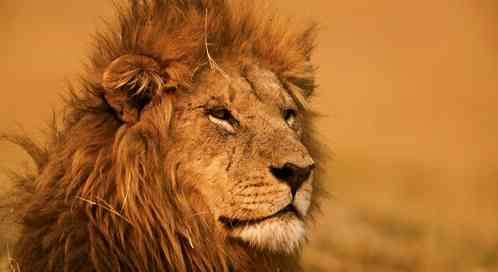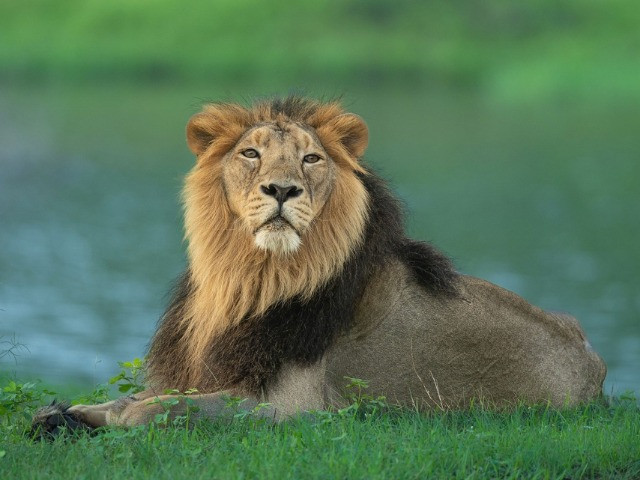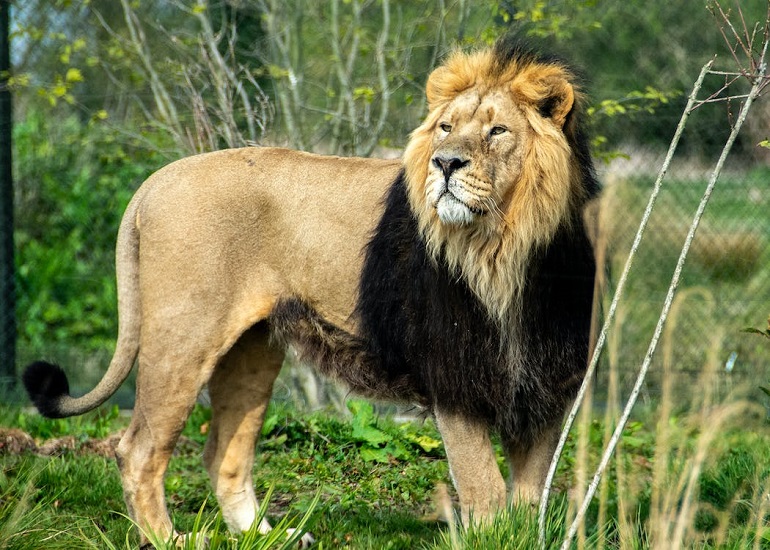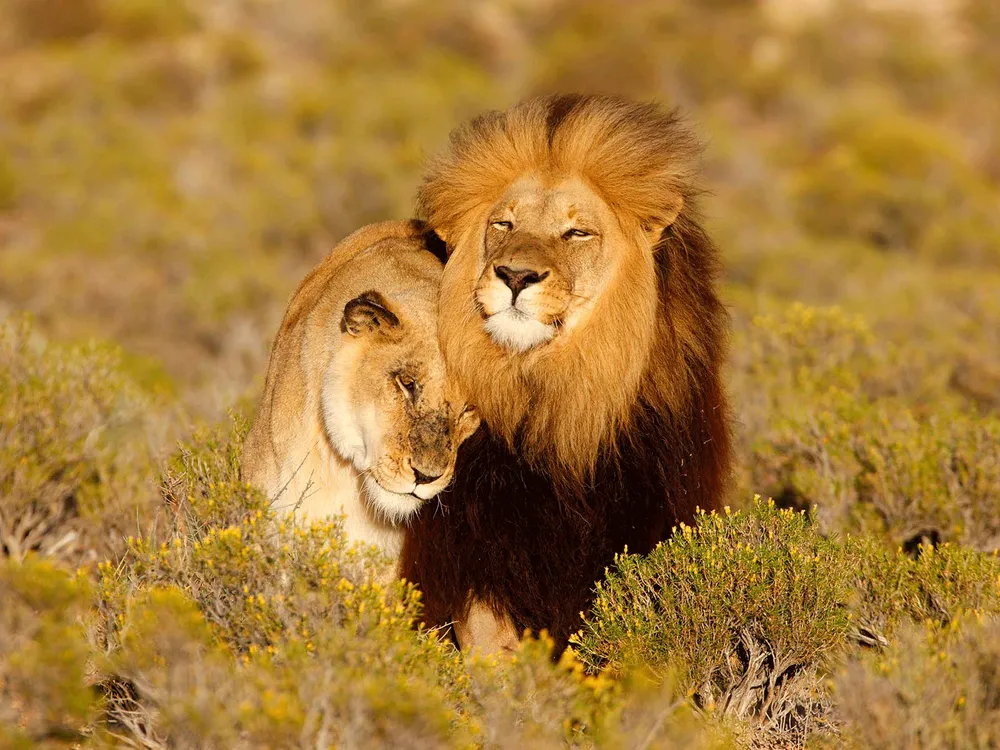Imagine a world where lions are not just a majestic animal found in distant savannas, but are also intimately intertwined with the cultural fabric of indigenous communities. In this article, we explore the fascinating ways in which these communities have taken up the responsibility of preserving lions, not just as a symbol of their heritage, but also as guardians of biodiversity. From traditional practices to innovative conservation initiatives, the efforts of these indigenous communities showcase a harmonious relationship between humans and nature that is worth celebrating and learning from.
Traditional beliefs and practices
Sacred status of lions
In many indigenous cultures, lions hold a sacred status and are revered as symbols of power, strength, and spirituality. These majestic creatures are seen as divine beings, representing the connection between humans and the natural world. Lions often appear in myths, legends, and folklore, embodying characteristics such as bravery and wisdom.
Symbiotic relationships
Indigenous communities have long recognized the interconnectedness of all living beings and the importance of maintaining a harmonious relationship with nature. They understand that lions play a vital role in the ecosystem, balancing prey populations and ensuring the health of their habitats. This ecological awareness is deeply ingrained in their traditions and practices, fostering a sense of stewardship towards the lion and its habitat.
Cultural rituals and ceremonies
Indigenous cultures have rich and diverse rituals and ceremonies that revolve around the lion. These practices serve to celebrate and honor the presence of lions in their lives, reinforcing the cultural significance of these magnificent creatures. Ceremonies may include offerings, dances, or songs dedicated to the lion, demonstrating the deep respect and reverence indigenous communities hold for this apex predator.
Conservation efforts
Community-led conservation initiatives
Indigenous communities have played a crucial role in conserving lion populations and their habitats. Recognizing the value of these majestic creatures, they have taken the lead in establishing community-led conservation initiatives. These grassroots efforts involve local people working together to protect lions from threats such as habitat loss, poaching, and human-wildlife conflicts. Through community engagement, these initiatives ensure the active participation of indigenous communities in the conservation process.
Role of indigenous knowledge in conservation
Indigenous knowledge systems have proven to be invaluable in the field of lion conservation. Passed down through generations, this knowledge encompasses a deep understanding of lion behavior, habitat dynamics, and effective conservation strategies. Indigenous communities are often the first to notice changes in lion populations or their behavior, making their knowledge crucial for monitoring efforts. Collaborating with indigenous communities allows for the integration of traditional knowledge with scientific research, leading to comprehensive and effective conservation initiatives.
Collaboration with conservation organizations
Indigenous communities have joined hands with conservation organizations to protect lions and their habitats. These partnerships create a synergy of traditional wisdom and scientific expertise, fostering a holistic approach to conservation. Organizations provide resources, technical support, and capacity-building opportunities to indigenous communities, empowering them to take on leadership roles in conservation initiatives. Through these collaborations, the voice and perspective of indigenous communities are amplified, contributing to more inclusive and sustainable conservation efforts.

Sustainable hunting practices
Hunting as a cultural tradition
For many indigenous communities, hunting is deeply rooted in their cultural traditions and practices. It is a way of life that has sustained them for generations, providing food, clothing, and important materials. Lions are sometimes hunted for ceremonial purposes, as a way of showcasing bravery and skills. However, indigenous communities recognize the need to balance their cultural practices with conservation objectives, adapting their hunting practices to ensure the long-term survival of lion populations.
Traditional hunting methods
Indigenous communities have developed sustainable hunting methods that minimize the impact on lion populations and their habitats. These methods involve extensive knowledge of the local ecosystem and the ability to track and locate lions without causing harm. Traditional hunting methods often focus on selective harvesting, targeting specific individuals rather than indiscriminate killings. Additionally, strict protocols and rituals are followed to ensure respect for the lion and the sacredness of the act.
Regulations and restrictions
To safeguard lion populations, indigenous communities have implemented regulations and restrictions around hunting practices. These rules may include seasonal hunting bans, restrictions on the number of lions that can be hunted, and the use of traditional weapons instead of modern firearms. By regulating their own hunting activities, indigenous communities are able to maintain a balance between their cultural practices and the conservation of lions, ensuring sustainable hunting practices for future generations.
Protected areas managed by indigenous communities
Community-based natural resource management
Indigenous communities have been highly successful in managing protected areas through community-based natural resource management (CBNRM) approaches. These approaches recognize the rights and roles of local communities in the stewardship of their lands and natural resources. By involving indigenous communities in the decision-making process, CBNRM ensures that their traditional ecological knowledge and cultural practices are integrated into the management and conservation of protected areas.
Indigenous-led conservation areas
Many indigenous communities have established their own conservation areas, where they have full control over the management and protection of lion populations. These indigenous-led conservation areas serve as models of community empowerment and demonstrate the effectiveness of traditional knowledge and practices in conservation. By managing their own territories, indigenous communities can develop conservation strategies that align with their cultural values, leading to more sustainable and holistic outcomes.
Advantages of community-managed protected areas
Community-managed protected areas offer numerous advantages for lion conservation. Firstly, indigenous communities have a deep connection and attachment to their lands, instilling a strong sense of responsibility and commitment to conservation. Secondly, their intimate knowledge of the local ecosystem enables them to implement conservation measures that are tailored to the specific needs of lions and their habitats. Lastly, community-managed protected areas provide economic opportunities for indigenous communities through sustainable tourism, further incentivizing their active participation in conservation efforts.

Restoration of habitats and ecosystems
Traditional methods of habitat restoration
Indigenous communities possess a wealth of knowledge regarding habitat restoration. Through traditional practices such as controlled burning, selective plant cultivation, and reforestation, they have been able to revitalize degraded habitats and restore ecosystem balance. These methods are often based on centuries of observation and experimentation, resulting in landscapes that can support healthy lion populations and a diverse array of flora and fauna.
Indigenous involvement in ecological restoration projects
Indigenous communities have become increasingly involved in ecological restoration projects across lion habitats. Their expertise and familiarity with the local environment make them invaluable partners in these initiatives. Indigenous community members actively participate in habitat restoration activities, contributing their traditional knowledge and labor. This active involvement ensures that ecological restoration projects take into account the unique ecological needs of lion habitats and deliver sustainable outcomes.
Preserving traditional ecological knowledge
The preservation of traditional ecological knowledge is crucial for the long-term conservation of lions and their habitats. Indigenous communities are actively engaged in efforts to document and transmit their knowledge to younger generations. Through oral traditions, storytelling, apprenticeships, and formal education programs, they ensure the continuity of traditional ecological knowledge. By incorporating this knowledge into conservation practices, indigenous communities enable the application of time-tested strategies and the preservation of invaluable wisdom for future generations.
Education and awareness programs
Cultural education in schools
Indigenous communities recognize the importance of education in fostering a sense of environmental stewardship among younger generations. Many communities have initiated cultural education programs in local schools, where children learn about the significance of lions in their cultural heritage and the importance of conservation. By integrating cultural teachings with formal education, these programs instill a sense of pride and responsibility in children while equipping them with the knowledge and skills to protect lions and their habitats.
Indigenous storytelling and oral traditions
Indigenous storytelling and oral traditions have long been utilized as powerful tools for knowledge transmission and cultural preservation. Through stories, legends, and myths, indigenous communities convey the wisdom and values associated with lions. The power of storytelling lies in its ability to captivate and engage listeners, instilling a deep connection to the natural world and fostering a sense of awe and respect for lions. Indigenous communities continue to pass down these stories, ensuring that the cultural significance of lions is perpetuated and respected.
Engaging youth in conservation
Indigenous communities understand that the future lies in the hands of the younger generation. They actively engage youth in conservation efforts, providing them with opportunities to participate in hands-on activities, workshops, and training programs focused on lion conservation. By involving youth in these initiatives, indigenous communities inspire a sense of pride, ownership, and responsibility towards lions and their habitats. Youth become ambassadors for conservation, spreading awareness and advocating for the protection of these magnificent creatures.

Responsible tourism and eco-lodges
Indigenous-owned and operated eco-tourism initiatives
Indigenous communities have taken a proactive role in promoting responsible tourism through their own eco-lodges and tourism initiatives. These initiatives allow visitors to immerse themselves in the culture and traditions of indigenous communities while generating economic benefits for local people. By owning and operating tourism ventures, indigenous communities have more control over the impacts of tourism on their lands and can ensure that conservation practices and cultural values are prioritized.
Integration of cultural experiences
Indigenous-owned eco-lodges and tourism initiatives often prioritize cultural experiences as part of the visitor’s journey. This integration of cultural activities, such as traditional dances, storytelling, and craft demonstrations, provides visitors with a deeper understanding and appreciation of the cultural heritage associated with lions. It also fosters cross-cultural exchange and dialogue, breaking down barriers and building bridges between indigenous communities and visitors.
Empowering local communities through tourism
Responsible tourism has the power to empower local communities by providing economic opportunities and support for conservation efforts. Indigenous communities have utilized tourism as a means of economic diversification, reducing dependency on unsustainable practices. Revenue generated from eco-tourism is often reinvested in conservation initiatives, community development projects, and education programs, further strengthening the bond between indigenous communities and lion conservation.
Wildlife monitoring and research
Indigenous tracking and monitoring techniques
Indigenous communities possess extensive knowledge of tracking and monitoring wildlife, honed over generations of living in close proximity to lion habitats. These communities have developed sophisticated tracking techniques, enabling them to gather valuable data on lion behavior, movement patterns, and population dynamics. By combining traditional methods with modern technology, such as GPS tracking, camera traps, and remote sensing, indigenous communities contribute essential information to scientific research and monitoring efforts.
Collaboration with scientists and researchers
Recognizing the value of indigenous knowledge, scientists and researchers have established collaborative partnerships with indigenous communities. These collaborations foster mutual respect and learning, allowing for the exchange of scientific expertise and traditional knowledge. By working together, scientists and indigenous communities gain a deeper understanding of lion ecology and behavior, leading to more effective conservation strategies.
Contributions to lion research and conservation
Indigenous communities have made significant contributions to lion research and conservation. Their involvement in monitoring and data collection has expanded scientific knowledge about lion populations, migration routes, and social structures. Furthermore, their insights into the cultural significance of lions have helped shape conservation initiatives that respect and honor indigenous traditions. By actively participating in research and conservation efforts, indigenous communities are instrumental in ensuring the long-term survival of lions and their habitats.

Incorporating indigenous perspectives into policy
Recognition and inclusion of indigenous rights
The recognition and inclusion of indigenous rights in conservation policies are crucial steps towards achieving sustainable lion conservation. Indigenous communities have fought for their rights to self-determination, land ownership, and cultural practices. By acknowledging and respecting these rights, policies can be developed that foster collaboration and empower indigenous communities as active partners in conservation efforts.
Indigenous representation in decision-making processes
Incorporating indigenous perspectives in decision-making processes is essential for effective conservation governance. Indigenous communities bring unique insights and traditional ecological knowledge that can greatly enhance the development and implementation of conservation policies. By ensuring indigenous representation in decision-making forums, such as conservation boards and committees, the diverse voices and experiences of indigenous communities are valued and integrated.
Respecting traditional ecological knowledge
Respecting and integrating traditional ecological knowledge (TEK) into policies and management plans is crucial for successful lion conservation. TEK includes traditional practices, beliefs, and knowledge systems that have been developed over centuries of coexistence with lions. By recognizing the value and validity of TEK, policies can be shaped to incorporate traditional practices, conservation strategies, and a holistic understanding of the complexities of lion habitats.
Climate change adaptation strategies
Indigenous adaptation practices
Indigenous communities have long adapted to changing environments and weather patterns. Their traditional knowledge and practices have equipped them with strategies to cope with the impacts of climate change. For example, indigenous communities may modify their hunting and harvesting practices, alter migration routes, or employ traditional agricultural techniques that are resilient to changing climate conditions. These adaptation practices enable indigenous communities to maintain a balance between their cultural traditions and the challenges posed by climate change.
Observing and responding to changing environments
Indigenous communities have a profound understanding of their landscapes and closely observe the changes occurring due to climate change. They are often the first to notice shifts in rainfall patterns, the emergence of new wildlife behaviors, or altered vegetation growth. By actively observing and responding to these changes, indigenous communities can adapt their practices, conservation efforts, and policies to ensure the long-term survival of lions and their habitats.
Preserving biodiversity for future generations
Indigenous communities have a deep respect for the interconnectedness of all living beings and the need to preserve biodiversity for future generations. This ethos drives their commitment to lion conservation in the face of climate change. By incorporating traditional ecological knowledge, implementing sustainable practices, and engaging in conservation initiatives, indigenous communities are actively safeguarding biodiversity and ensuring the continuity of their cultural heritage for the benefit of generations to come.
As we delve into the cultural connections between indigenous communities and lions, it becomes evident how these communities play a crucial role in the preservation of lion populations, their habitats, and the broader ecosystem. Through their deep-rooted traditions, sustainable practices, and active involvement in conservation efforts, indigenous communities demonstrate the power of combining heritage and stewardship for the benefit of all. By recognizing and valuing indigenous knowledge and perspectives, we can foster a more inclusive and resilient approach to lion conservation – one that honors cultural diversity and safeguards the future of these magnificent creatures.


